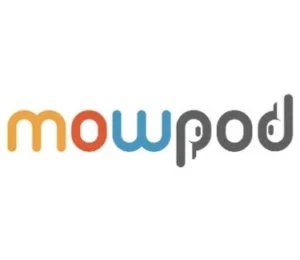Context on Mental Models — Kyle Williams // Brickstack
- Part 1Market Pain Scoring — Kyle Williams // Brickstack
- Part 2 Context on Mental Models — Kyle Williams // Brickstack
- Part 3Scoring an industry using mental models — Kyle Williams // Brickstack
- Part 4GTM Hot Takes for Partner Management — Kyle Williams // Brickstack
- Part 5GTM SasS Hot Takes — Kyle Williams // Brickstack
Show Notes
-
01:57What is a mental modelMental models are formed as a result of a company's unique insights and experiences. And its really about leveraging those experiences to find and communicate with prospects.
-
03:05Scaling mental modelsStart with understanding why customers purchase your product. Look at how your sales reps recognize these opportunities in the market. Get customer feedback to adjust your approach.
-
05:55When businesses should start refining mental models100 customers is a good base for businesses to understand and refine their mental models.
-
07:12Transferring context when shifting from a founderTo scale the business, you have to move away from founder-led sales. Each team will have their own expertise, so its important to switch context accordingly.
-
08:39Insight versus observationObservations just tell you whats going on with a business. Insights tie those observations together uniquely to identify issues a business may be having and solutions to them.
-
11:02Tactics versus strategyIf the approach is built around your teams expertise, and can be uniquely applied to an organization, its strategic. If the approach isnt unique or supported by expertise, its a tactic.
-
11:51Identifying patterns within your customer baseGet mental models from sales reps. Use them to find patterns within your customer base and market. Patterns should be backtested to confirm that they are true indications of the market.
Quotes
-
"When we talk about mental models, often we're talking about the information that's locked in your team's head. If you had unlimited time for your best sales rep, SDR, or researcher, what would they do?" -Kyle Williams, Founder, Brickstack
-
"If you don't know why your customers bought, you're not basing your mental models on reality. You're just asking for opinions from the team that may or may not be true." -Kyle Williams, Founder, Brickstack
-
"I wouldn't expect massive leads through the door when we're testing something versus taking something that's been refined from hundreds of customer conversations and mapping it to the market." -Kyle Williams, Founder, Brickstack
-
"Your inbound process probably has given you a lot of expertise internally, but you need to switch the context to make it work for outbound." -Kyle Williams, Founder, Brickstack
-
"Insight is where we're taking multiple observations and combining them in a unique way, and then being able to communicate to that customer." -Kyle Williams, Founder, Brickstack
-
"Where those two come together, the experience your customer is having with your unique insight, is where youre being strategic and not just trying to get someone's attention so in hopes they'll reply." -Kyle Williams, Founder, Brickstack
-
"Look for patterns that show up in your customer base so that we're back testing and confirming that these do show up organically in the market." -Kyle Williams, Founder, Brickstack
- Part 1Market Pain Scoring — Kyle Williams // Brickstack
- Part 2 Context on Mental Models — Kyle Williams // Brickstack
- Part 3Scoring an industry using mental models — Kyle Williams // Brickstack
- Part 4GTM Hot Takes for Partner Management — Kyle Williams // Brickstack
- Part 5GTM SasS Hot Takes — Kyle Williams // Brickstack
Up Next:
-
Part 1Market Pain Scoring — Kyle Williams // Brickstack
Kyle Williams, Founder of Brickstack, discusses go-to-market strategies with guest-host Jordan Crawford, Co-Founder of Blueprint. When outbound teams spend more time doing research than talking to prospects, they miss out on big accounts. Scoring the market beforehand means sales and marketing teams can focus on speaking to the right customers. Today, Kyle talks about market pain scoring.
Play Podcast -
Part 2Context on Mental Models — Kyle Williams // Brickstack
Kyle Williams, Founder of Brickstack, discusses go-to-market strategies with guest-host Jordan Crawford, Co-Founder of Blueprint. B2B teams have long had access to tools for raw based data and messaging at scale. What they’ve been missing is their own mental models, and how to translate those into finding and communicating with new customers. Today, Kyle talks about context on mental models.
-
Part 3Scoring an industry using mental models — Kyle Williams // Brickstack
Kyle Williams, Founder of Brickstack, discusses go-to-market strategies with guest-host Jordan Crawford, Co-Founder of Blueprint. Marketing comes with its own set of challenges and one that stands out is clearly demonstrating to prospects the problems we solve. There’s also the process of identifying whether these prospects are a good fit for our services. Today, Kyle talks about pain scoring case studies.
Play Podcast -
Part 4GTM Hot Takes for Partner Management — Kyle Williams // Brickstack
Kyle Williams, Founder of Brickstack, discusses go-to-market strategies with guest-host Jordan Crawford, Co-Founder of Blueprint. Marketing messages are changing constantly. In response, several companies are providing the technology to make these processes easier and faster for users. Today, Kyle talks about go-to-market hot takes for Vendr.com, Hopin.com, and Webflow.
Play Podcast -
Part 5GTM SasS Hot Takes — Kyle Williams // Brickstack
Kyle Williams, Founder of Brickstack, discusses go-to-market strategies with guest-host Jordan Crawford, Co-Founder of Blueprint. What your best SDR or AE notices may indeed be very painful, for your prospects. But, it may only happen frequently and not be worth the investment. Today, Kyle talks about partner management tools.
Play Podcast










